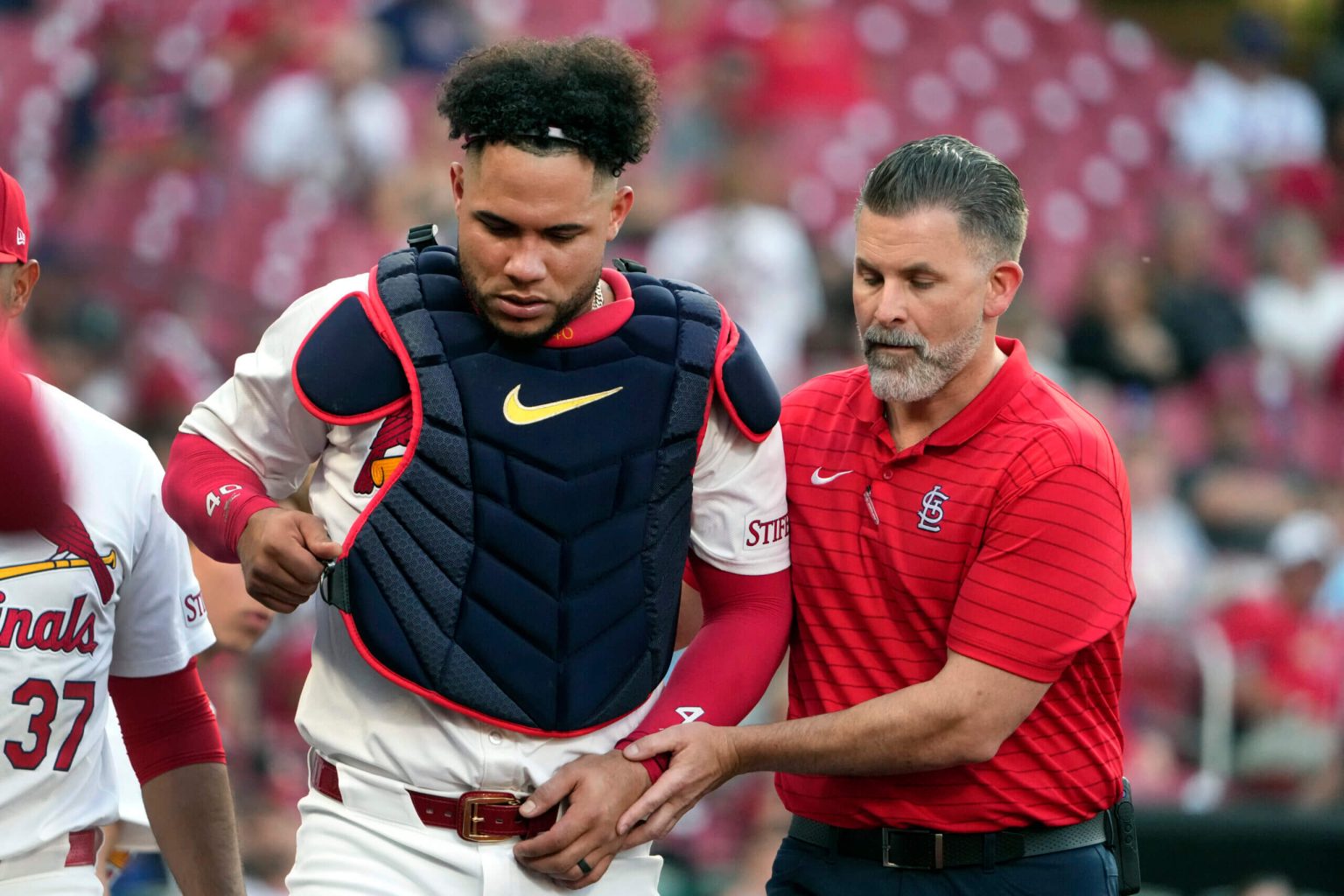Major League Baseball sent a memo to all 30 clubs warning about a rise in catcher’s interference incidents, with catchers getting struck by bats due to their close proximity to the plate in an effort to improve pitch framing. This shift in positioning has led to a significant increase in catcher’s interference calls, with 33 incidents recorded in 2024 compared to an average of 31 from 2010 to 2018. The league is now on pace for a record 148 catcher’s interference calls this season, highlighting the potential safety risks for catchers.
One such incident involved St. Louis Cardinals catcher Willson Contreras, who sustained a fractured left arm after being struck by a swing from New York Mets’ designated hitter J.D. Martinez. Contreras had been working on improving his pitch framing and had adopted a closer positioning behind the plate, which may have contributed to the injury. The Cardinals’ experience serves as a cautionary tale for teams embracing the strategy of positioning catchers closer to the plate to enhance pitch framing and secure low strikes.
While the push for better framing and control of the lower strike zone is driving catchers to position themselves closer to the plate, the increase in catcher’s interference incidents underscores the need to find a balance between performance and safety. Some managers and coaches advocate for self-monitoring of catcher positioning during games, emphasizing the importance of avoiding injuries while still optimizing framing opportunities. The debate continues on the best approach to ensure catchers’ safety without compromising their effectiveness in securing strikes.
The dilemma of catcher’s interference extends beyond positioning, as the responsibility is also placed on hitters to control their swings within the batter’s box. With the potential for injuries on both sides, the issue calls for a comprehensive solution to reduce the risk of incidents like Contreras’ injury. Suggestions range from physical lines behind the plate to automated ball-strike systems, but the implementation of such measures remains a topic of discussion within Major League Baseball. The Cardinals’ firsthand experience highlights the urgency of addressing catcher’s interference to prevent further injuries among players.
As teams navigate the delicate balance between performance and safety for their catchers, the issue of catcher’s interference continues to challenge the baseball community. With the potential for significant impacts on player health and team performance, finding effective solutions to mitigate the risks associated with close positioning behind the plate remains a priority. The ongoing dialogue among managers, coaches, and players underscores the need for proactive measures to address catcher’s interference and ensure the well-being of catchers as they fulfill their crucial role on the field.


